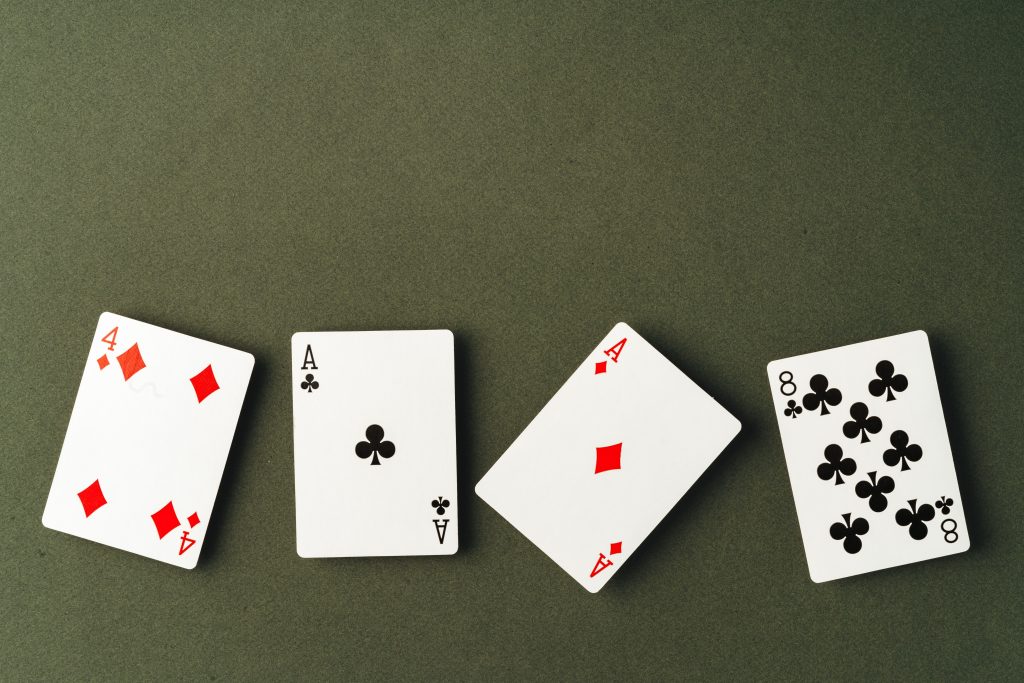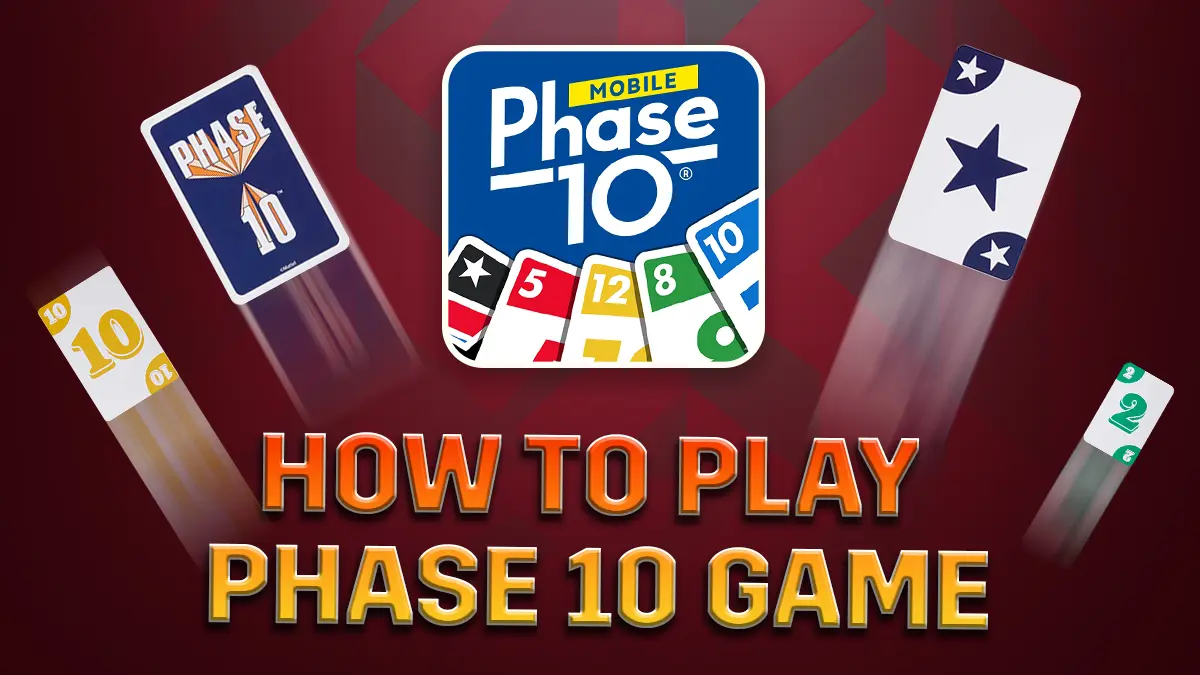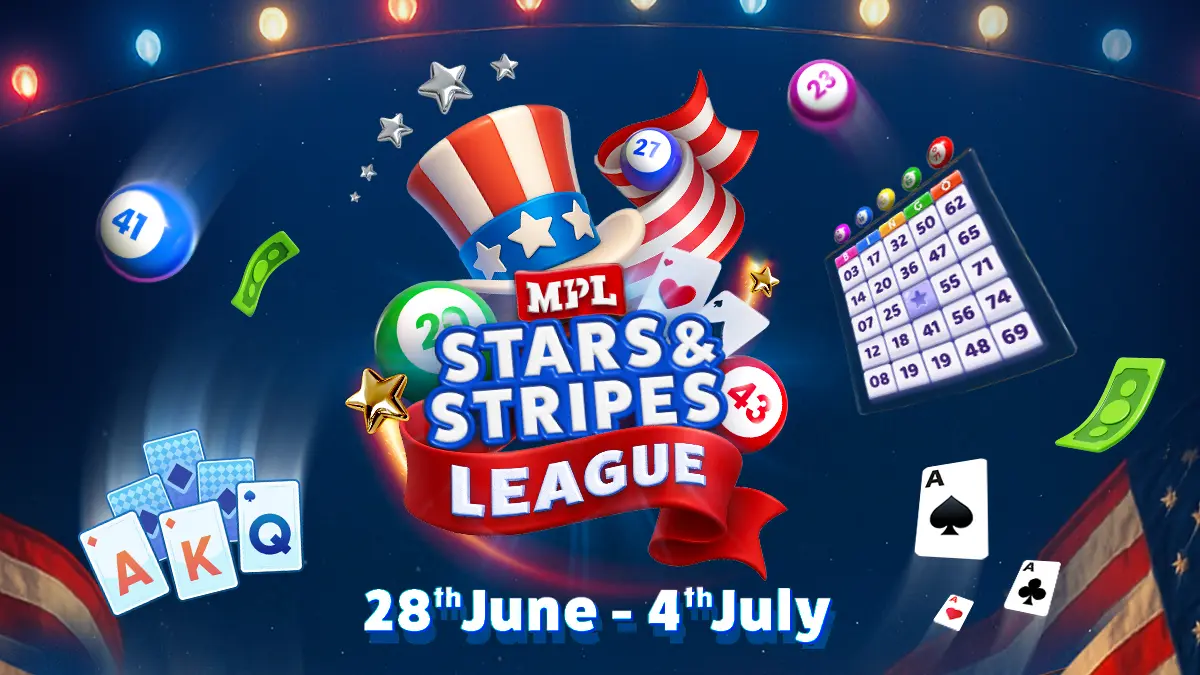Table of Contents
TogglePhase 10 is a popular card game that blends the elements of rummy and set collection card deck but with a twist. Phase 10 is a popular card game that blends the elements of rummy and set collection but with a twist. Two to six players play it with a 108-card deck. The game requires strategy, luck, and competitive play to win, making it captivating for players. Simply put, the goal is to complete all 10 game phases first and win.
As the phases progress, the game increases in complexity, keeping players engaged throughout. Each player must adapt their tactics as they pass through different stages, balancing the need to complete their current Phase with the pressure to minimize points if another player goes out first.
The Phase 10 game is incredibly easy and challenging. But its true appeal lies in its accessibility to new players without compromising on the complexity of typical card games. Even experienced players find it engaging.
There are multiple variations of the game, but learning Phase 10 rules is at the core of it all. Let’s learn how to play Phase 10 card game while understanding the basic Phase ten rules and variations.
Interesting Read: Best Card Games For Adults
Brief History of Phase 10
Phase 10 was created by author Kenneth R. Johnson, who lives in Michigan State. He is an entrepreneur, inventor, speaker, and author. Inspired by his family’s love for card games, he developed Phase 10 as a more challenging alternative to traditional rummy games. It was initially self-published and sold in Michigan. But in 1987, a games company, Fundex, acquired rights to the game and started mass-producing it. It became a massive Fundex, i.e., a success among card games in the USA.
Later, in 2010, Mattel, an American multinational toy manufacturing and entertainment company, acquired Fundex, including the rights to the Phase 10 game. Today, the game is available in various formats and has been translated into multiple languages, and millions of people enjoy the Phase 10 game. Today, the game is available in various formats and has been translated into multiple languages, and millions of people enjoy it worldwide.
However, Phase 10 is similar to UNO, where you’re always trying to get rid of all the cards in your hand first, in all the rounds. However, unlike in UNO, discarding cards in the Phase 10 game is only a secondary goal. The main goal is to complete pre-defined phases of the game with the lowest score rather than lose the cards.
Terminology in Phase 10
Get acquainted with the terminology of Phase 10 before learning the Phase Ten rules.
- Phase: A specific combination of cards players must collect and lay down, e.g., 1 run of 7 in Phase 4.
- Set: A set of cards with the same number is known as a set, e.g. ♠3♥3 ♣3.
- Run A set of at least four cards with consecutive numbers is called a run, e.g., ♥3 ♠4♦5♣6♥7♠8♦9.
- Wild Card: A card that can be used as both a number or color to complete a phase is known as a wild card. Once a wild card is played, it can’t be replaced by the intended card and used elsewhere in the game. It must remain as that card till the end of that hand.
- Skip Card: A card that allows you to skip the next player’s turn. Players can use it by simply discarding the “Skip” card and choosing the player who will lose the run.
- All in One Color: A group of cards with the same color, irrespective of the numbers or sequence, are known as One Color cards. Phase 8 requires collecting 7 cards of the same color when the cards’ numbers or sequence are irrelevant. The first player to collect 7 cards of the same color will win the round.
The 10 Phases as per the Official Rules

Source: FabrikaSimf /shutterstock
As per the official Phase 10 rules with regular cards, a player should complete all ten phases by achieving the below goals in each phase:
- Phase 1 – 2 sets of 3
- Phase 2 – 1 set of 3 and 1 run of 4
- Phase 3 – 1 set of 4 and 1 run of 4
- Phase 4 – 1 run of 7
- Phase 5 – 1 run of 8
- Phase 6 – 1 run of 9
- Phase 7 – 2 sets of 4
- Phase 8 – 7 cards of a color
- Phase 9 – 1 set of 5 and 1 set of 2
- Phase 10 – 1 set of 5 and 1 set of 3
The above rules for each phase vary for different game variants like Paradise, Cocoa Canyon, Disco Fever, etc.
Phase 10 Card Game Rules at a Glance
- Starting by dealing 10 cards to each player.
- Place the remaining cards face-down as a draw pile and flip the top card to start the discard pile.
- Each player will draw and discard a card during their turn.
- Try to complete the current Phase by forming the required card combinations.
- Once a phase is completed, lay down those cards.
- Continue playing to get rid of the remaining cards.
- As per Phase ten rules, a round ends when a player discards all their cards.
- Score penalty points for cards left in hand.
- Move to the next Phase in the subsequent round.
- The game ends when a player completes all 10 phases.
Also Read: Everything You Must Know About The Pinochle Card Game
How to Play Phase 10 Game?
Phase 10 game uses the standard deck of 108 cards and can be played by 2-6 players.
Dealing Cards
Select a dealer to shuffle and deal 10 cards face-down to each player. The remaining deck is placed in the center of the group to form the draw pile. Players must keep their cards hidden from their opponents or risk revealing their game.
Setup
Place the remaining deck of cards face-down in a draw pile. Now, pick a card from the draw pile and keep it face-up next to it to start the discard pile. The first turn goes to the player on the left side of the dealer and proceeds in the clockwise direction.
Turn
During the turn of a player, they must draw a card from the draw pile or discard pile. At the end of their turn, they must also discard one card onto the discard pile if the opportunity presents itself in a face-up position- the strategy of which card to discard starts here. Ensure it depends on what cards opponents need or do not need. You can also use it as a skip card when the opportunity presents itself.
If you are ready to complete a phase during your turn, ensure you have all the cards required to make a phase before laying them up face-up in front of you. If not, the turn goes to the next player in a clockwise direction.
Hitting
After discarding a card, you may “hit” on other players’ laid–down phases. Add matching cards to sets or sequences already on the table to reduce the cards in your hand.
Hitting is the only way to get rid of multiple cards after laying down your Phase. Usually, you’d pick up and discard one card each turn, keeping your hand the same size. Hitting lets you discard cards by adding them to your or another player’s completed Phase.
For example, if you’ve completed Phase 4 (a Run of 7) with cards “5” through “11” and have a “1,” “3,” a Wild, and another “7” left, you can discard the “1” and “3” to another player’s completed Phase (2 Sets of 3 with “1” and “3” cards). Use the Wild on any Phase. Finally, discard the “7” to win the round.
Phase Completion
Each player must work towards completing the requirements of their current Phase by collecting specific combinations of cards. Those who don’t complete a phase before another player goes out will remain in the same Phase until they complete it. Also, one should complete all the phases in the specified order only.
Also Read: 3 player card games
Lay Down
Laydown occurs when a player has all the required cards to complete a phase. Then, they can lay down their cards face-up for every laydown when a player has all the required cards to complete a phase. Then, they can lay down their cards face-up for everyone to witness the completed Phase. Each player can lay down only once per hand.
Continue Play
After the lay-down, that player shall continue to play to discard remaining cards, hitting on their phase or the opponent’s phases.
Round Ends
The round ends when a player discards their last card, who will then score zero for the round. The rest of the players’ inga will receive penalty points for the cards remaining in their hands. That’s why each player must work towards having as few cards as possible, if not win the round. They will gain a score based on the number of cards in their hand according to the rules below rules:
- Number cards = 5 Points
- Face cards = 10 points,
- Skips = 15 points,
- Wild cards = 25 points.
The more points a player gets, the more difficult it will be for them when someone finishes phase 10. They will have more scores, and it will be difficult for them when someone finishes phase 10. They will have more scores in their hand, setting them up for loss.
Note that a round is when a player moves from one phase to the next. The game goes through multiple rounds before it ends.
Phase Advancement
Players who complete their current Phase will move to subsequent phases, while those not completing will remain in the same Phase. To begin the next round, a new hand of 10 cards is dealt to each player.
Winning the Game
The first player to complete 10 phases at the end of a hand will win the game and have the lowest score.
When there is a tie between two or more players completing phase 10, the player with the lowest score wins. If scores are the same, the tied players will replay the hand and try to complete phase 10 again (just like the superover in Cricket, though not exactly!). The first player to go out will win the game.
Also Read: Fun Card Games to Play That Guarantee Absolute Entertainment
Phase 10 Game Variations
The game is played in multiple variations across the world. Some of the popular variations are given below:
- In one variation, all the players play 10 hands. However, after each round, all the players advance to the next Phase, regardless of whether they completed their Phase. In 10 hands, all players advance to the 10th Phase, and the player with the lowest score wins the game.
- In another shorter version of Phase 10, the players decide how many phases they want to play to complete the game. The number of phases (5 or 7) is agreed upon at the beginning of the game, while all the gameplay rules remain the same.
- In play 10 hands. However, after each round, all the players advance to the next phase, regardless of whether they completed their phase. In 10 hands, all players advance to the 10th phase, and the player with some variations, players only play even phases (2,4,6,8,10) following the Master edition rules. The player with the lowest score at the end will win.
- There are many variations like Island Paradise, Cocoa Canyon, Disco Fever, Cupcake Lounge, Candy Castle/Mountain Vista, Moonlight Drive-In, etc., where the combinations of cards in each Phase differ from that of the official edition.
The gist of all variations lies in understanding the Phase 10 card game rules and producing variations as per convenience. Of course, when you’re playing in small groups, you can also come up with some variation without violating any legal norms! Your imagination and innovativeness are the only limits imagination and innovativeness are the only limits.
Another game that is closely related to Phase 10 is Draw 4. You can also play Draw 4 on MPL and win real cash prizes.
Conclusion
Going through it, you must have realized that Phase 10 rules are challenging enough for a card game for players of all levels. The popularity of the game lies in its balance of simplicity and depth. As each Phase moves forward, players must become more careful to adopt different strategies. The best part is that you can play the game casually among friends or in competitive tournaments. Whatever the type of game and format, learning the Phase 10 game rules sets the solid stage.
FAQs
How to play Phase 10 card game?
In Phase 10, players have to complete 10 phases, each with specific card sets or runs. They draw and discard cards each turn, aiming to complete their current Phase. The player who completes a phase can lay down their cards. The game continues until one player finishes all 10 phases.
Can you make extra sets in Phase 10 rules?
No, in Phase 10, you can only make sets that are required for the current phase. This also applies to runs. Making extra sets or runs doesn’t help finish the phase and doesn’t give players an advantage.
What is 1 run of 4 in phase 10?
Four consecutive cards of any color make up 1 run of 4 in Phase 10. For example, a run of 4 could be 3, 4, 5, 6, 7, 8, 9, 10. In a run of 4, the colors are irrelevant, only the sequence of numbers.
Do Skip cards count as a color in Phase 10?
No, skip cards do not count as a color in Phase 10. They are not helpful as part of any set, run, or colo-unique cards used to skip another player’s turn and are not useful as part of any set, run, or color phase requirements. They can only disrupt the opponent’s moves.
What is the floating rule in the Phase 10 game?
The floating rule in Phase 10 allows players to “float” if they cannot discard after completing their Phase. The player continues drawing and playing cards until they can discard, giving them extra turns within the same round.








